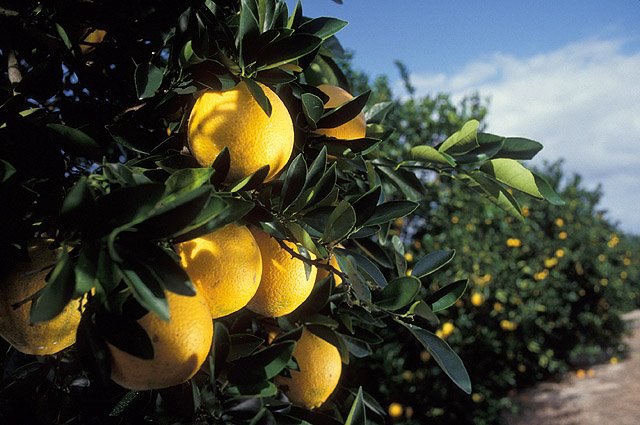Jerry Newlin has weathered many disease outbreaks in the citrus industry, from canker to Tristeza and Blossom Blight, but citrus greening has proven the worst outbreak he’s seen, and the worst the Florida citrus industry has had to face. Newlin is vice president of citrus operations for Orange-Co, a citrus grove near Arcadia that, like many groves across the state, has been directly impacted by the disease. “It is the most severe disease we’ve ever faced, because it affects all trees, of all ages. It is also the most expensive disease we have. We own 15,000 acres, and all of our acres are impacted,” he says, of the disease toll on his company’s grove, which mirrors grove situations across the state.
Huanglongbing disease (HLB), or citrus greening, has the potential to devastate the international citrus industry, including Florida, despite being in the state for only a few years. The Asian citrus psyllid, the insect that vectors the HLB bacterium, wasn’t seen in Florida until 1998. It would be 2005 before HLB was first identified in south Florida, but by 2009, 34 counties, including Polk, and nearly all counties in the citrus-growing region of the state, identified the disease within its borders. As Newlin describes it, “There aren’t too many places that don’t have citrus greening. It is just to what degree do they have it.”
There is no cure for the disease, although entomologists and pathologists around the world are desperately searching for one, including the University of Florida’s Citrus Research & Education Center (CREC) in Lake Alfred, one of the premier citrus research centers in the world. In addition to IFAS research, the citrus industry also founded the Citrus Research & Development Foundation, located at the CREC to oversee HLB research.
Because of the current lack of a cure, disease containment lies in control of the psyllid, which is possible through chemical insecticides. But the psyllids can create multiple generations throughout the year, making inhibition difficult, especially in areas with heavy psyllid populations. It led the Brazilian citrus industry to take a look at the bigger picture, and they found surprising results, specifically that spraying larger areas controlled larger psyllid populations, preventing many untreated psyllids from flying back into those groves.
This eventually led to Citrus Health Management Areas (CHMA), a term coined by the National Academy of Sciences. Growers in particular areas began voluntarily joining hands to coincide insecticide applications and spray larger psyllid populations for better control, lessening the risk of psyllid “fly back.” The Citrus Research & Development Foundation has also shown interest in CHMA.
Tom Turpen, program manager of the Foundation, says, “It is a way for growers to voluntarily coordinate their fight against HLB and most importantly, psyllid control and monitoring. The main reason [growers] are more likely to be successful in controlling psyllids is if their sprays are the same. If it’s not coordinated, then the chance of insecticide resistance in the psyllids is a lot higher.”
Growers are already creating CHMA in Florida, such as the Northeast DeSoto County Growers Group, which currently has 24 growers and grove managers working together, including Orange-Co. They have started small, coordinating only one to two sprays annually since the group’s inception, but they are seeing great cooperation among the growers at nearly 100 percent. That has led to dramatic decreases of psyllids in the area, and a growing optimism among some in the industry, including Newlin, who sees the potential for controlling the disease with the CHMA. “Maybe we can hold back HLB to some level that we can survive,” he continues, “but I think that for right now, controlling psyllids is one of the best things we can do.”
CREDITS
story by EVERETT BRAZIL, III

